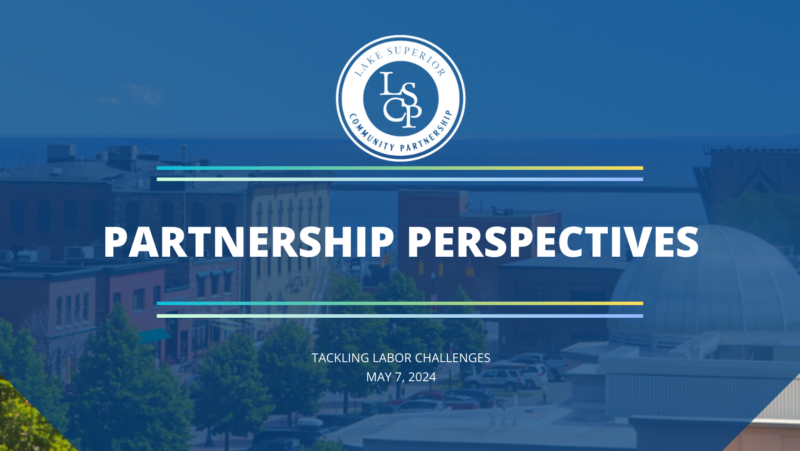Tackling Labor Challenges Together
Posted by Lake Superior Community Partnership on May 8, 2024
 On April 26, the LSCP team held our second Breakfast and Business event of 2024. The topic was workforce trends and challenges. That’s a broad topic, so you may wonder how exactly one addresses such a broad topic. Our answer: on multiple fronts including ways you might not expect.
On April 26, the LSCP team held our second Breakfast and Business event of 2024. The topic was workforce trends and challenges. That’s a broad topic, so you may wonder how exactly one addresses such a broad topic. Our answer: on multiple fronts including ways you might not expect.
Over the years, the LSCP has built an array of tools and partnerships aimed at helping businesses fill open positions, from regularly sharing job postings and connecting businesses to our friends at talent partners, like Upper Peninsula Michigan Works, to sharing updates that could impact labor strategies. These are important and helpful tools; we’re always finding new ways to use them effectively.
However, addressing workforce shortages will take more than proactively spreading the word about open jobs. It will also require tackling big, complex issues like housing, childcare, community development, air service, and more. Why? Because these issues impact our ability to retain existing workers and attract new ones. We must address these challenges to continue reversing four decades of population decline (now two years of consecutive growth and counting!). They also impact the cost of living, which impacts the wages our businesses must offer to be competitive and, therefore, how profitable they can be.
At Breakfast and Business, we shared some key information from the 2023 U.P. Labor Market study. The big takeaway is that the myth that we experience a lower cost of living in the U.P. – and can, therefore, accept lower wages – doesn’t hold up once you look at the data. For example, a family of four with both parents working has an average cost of living of approximately $113,000. To bring in enough revenue to cover these costs, both parents’ hourly income must be at least $27.38 on average. However, the posted average hourly rate is $20.98. Under every single scenario, as soon as a child is introduced into the equation, families’ average costs rise above the average wage. This means families opt to leave the area or one parent drops out of the workforce to provide childcare directly; even if they eventually return, they likely face an earnings gap for the rest of their career. If they opt not to have children, we continue the cycle of population decline. Either way, we lose as a region.
However, it’s not as easy as simply asking employers to pay more. While we certainly hope employers will use the labor study data as they formulate workforce strategies, we also need to work together to tackle some of the biggest components in that cost-of-living calculation: housing, childcare, and transportation. That’s why the LSCP is actively working to add more housing, create more childcare businesses, add more air service, ensure reliable and affordable energy, and create vibrant, walkable communities. All those things make families more likely to stay and set down roots in our region. And, as markets would dictate, having more of those things should help moderate costs and, therefore, the wages our employers must offer to be competitive.
But it’s not all about money. In addition to wages, the panel at the Breakfast and Business event noted the importance of benefits and culture, including flexible work schedules, team collaboration, and opportunities for career advancement. While every employer’s situation is different, the data backs up this advice. We encourage businesses and organizations of all sizes to factor in these concepts as they consider workforce strategies. Attending LSCP events such as Breakfast and Business and the Partner Engagements gatherings provides valuable opportunities to network with other businesses and learn how they are incorporating similar strategies.
Ultimately, it will take all of us working toward a shared goal of creating the type of opportunities and communities that keep families here and attract new ones. From benchmarking our wages against the market (the LSCP can assist with this via a wage study) and cost of living to collaborate on shared projects that help manage costs and foster new opportunities, we’re in this for the long haul together to ensure our businesses have the labor they need to succeed.
If you’re already active in our efforts, thank you. If you aren’t yet, we welcome you to participate in whatever ways you can. You can learn more about our work and find an investment level that’s right for you by visiting www.marquette.org.

